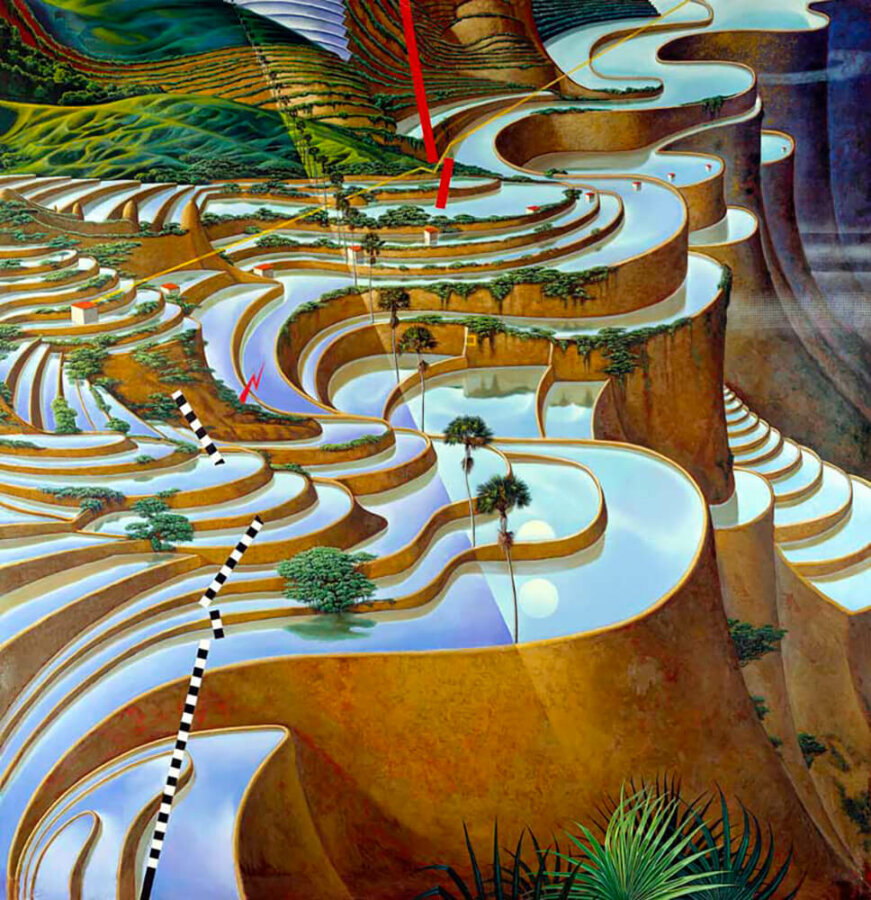
Online creation
Fourth Worlds
Stefanie Kiwi Menrath june 2018 – november 2018
From 01 June to 30 November 2018
Jeu de Paume – Online
Imaginary Ethnography in Experimental Music and Sound
While cultural mixing has been a reality of all societies since time immemorial, there also exists a long history of circumscribing cultures as separate and geographically localized entities. Ethnographic field recording functions as part of this history of positioning and differentiating music cultures in the way that it links sounds to localities and positions them within a cultural cartography. In recent decades, a number of artists have countered static notions of culture and ideas of a territorialisation of music and sound with critical strategies of imagination and the imaginary. Through their work they ask: What are the imaginations inherent in the documentary technique of ethnography? How does the modern technology of field recording perpetuate a Eurocentric perspective of culture? Can sonic speculation destabilize cultural essentialisms or stimulate critical counter-memories?
Composer and trumpeter Jon Hassell set the stage with his eponymous 1980 album Fourth World Vol. 1: Possible Musics (reissued in 2014): « I wanted the mental and geographical landscapes to be more indeterminate – not Indonesia, not Africa, not this or that »… « Something that could have existed if things were in an imaginary culture, growing up in an imaginary place with this imaginary music”. In Hassell’s music the notion of “Fourth World” creates an imaginary place for musical and cultural exchange: beyond the utopia of a conflict-free cultural melange or the dystopian clash of cultural forms, it offers to transcend merely additive notions of contact. Hassell’s “Fourth World” draws on the “otherworldly” quality of music as such: not as an extension of the literal, developmental three-world-model, but as an experimental exploration of the spatial and temporal references of music and sound.
Taking Hassell’s notion of Fourth World as a conceptual formation (not as a musical genre), « Fourth Worlds » (note the plural) turns its focus to a series of artistic approaches that navigate the history and present tense of violently colonial, playfully postmodern or brashly contemporary cultural differentiations. « Fourth Worlds » aims to resonate with transcultural sonic thinking that, as in Paul Gilroy’s Black Atlantic, elucidates the performative and mobilizing dimension of sound and the restless, recombinant qualities of diasporic cultures criss-crossing oceans and resisting monolithic notions of “roots”. In this context, imagination has also been rightly critiqued at length as an instrument of domination and “othering”: imagination plays its part in the spatiotemporal distancing from “other”, “traditional” or “ethnic” cultures – for example in the cartography of former “colonies” and “nation states” and in narratives of the “other”.
Imagination is central not only to this history but also plays a crucial role in contemporary practices of ethnography – be they applied to the field of art or in cultural studies. Strategies of imaginary ethnography think these fields together and methodically reassess imagination. Imaginary ethnography alludes to both the productive capacity of imagination and its reproductive elements: it relates to the “cultural imaginary “ as a negotiation of a vast archive of images and socially shared imaginations about “others”, but it also activates imagination as a creative capacity of making appear a new image of something that neither is nor was.
Taking this as its starting point, « Fourth Worlds » brings together a selection of musical and sound artists and theorists who question the discourse of “otherness” through speculation. Dubious origin myths, mock music archives and phantom atlases, counter-memories and digital diasporic nations as well as islands empathically tied by pacifism, imaginative travel journals, future archaeologies or reconstructions of soon to be lost worlds – the pieces selected for this exhibition project musical and artistic counterstrategies to the ethnographic urge of fixing cultures to places.
